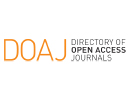Editorial Process
Editorial Process
The editorial process of Argumentos is carried out through the Open Journal Systems (OJS) platform, an open-source journal management software developed, promoted, and freely distributed by the Public Knowledge Project under a GNU General Public License. To submit an article to the journal, and for the entirety of the editorial process, authors must use the OJS platform (see Instructions for Authors). The editorial process comprises three stages:
First Stage: Basic quality review and assessment of the journal’s focus and scope
Manuscripts are reviewed by the journal’s editor to verify that they are unpublished, free of plagiarism (see Anti-plagiarism Policy), meet minimum standards of quality in terms of writing and scholarly rigor, and fall within the journal’s focus and scope (see Focus and Scope). Book reviews and thesis abstracts are reviewed by the Editorial Committee and do not undergo peer review.
Possible outcomes of this stage:
-
The article is sent for peer review.
-
The author is contacted to provide further information (e.g., in cases of suspected plagiarism, ethical concerns regarding authorship, etc.) or to make minor corrections to the article (e.g., issues related to writing).
-
The article is rejected.
Timeline: In all three cases, the corresponding author will be notified within a maximum of three weeks.
Second Stage: Double-blind peer review
For article evaluation, Argumentos employs a double-blind peer review process conducted by expert reviewers (see Ethics and Best Editorial Practices Policy), following these steps:
-
Anonymization: The article is copied into a new document (to remove original properties and metadata). Names, affiliations, and references to the authors’ own work are removed. In the original version, these alterations are flagged so they can be restored if the manuscript is accepted. The anonymized version is sent to two specialists along with an evaluation form covering various criteria of academic quality (see Review Forms). Reviewers assign a quantitative score.
-
Evaluation: A reviewer’s assessment is deemed favorable if the total score exceeds two-thirds of the maximum possible points. If both evaluations are favorable, the editor decides on publication. If the two evaluations diverge, the editor may seek a third review or decide independently whether to accept or reject the manuscript. In some cases, the decision on timeliness and publication may be discussed with members of the Editorial Board.
Possible outcomes of this stage:
-
The article is accepted without changes or with minor adjustments suggested by the editor or reviewers.
-
The article is accepted for publication contingent on revisions requested by the editor or reviewers.
-
The article is rejected. In the case of rejection, the article is explicitly released so the author may submit it to another publication.
In the first two cases, the author will receive anonymized comments from reviewers, as well as feedback from the editor. If revisions are required, the author must submit the revised manuscript with changes highlighted in a different font color, along with a detailed change report. A revised version may be sent back to reviewers for further evaluation. If the author disagrees with certain requested changes, they must provide justification.
Resubmission policy: Authors of rejected articles may only resubmit if:
(i) the grounds for rejection allow it (e.g., under no circumstances will a manuscript previously rejected for plagiarism be reconsidered); and
(ii) the author provides a written explanation of the changes made, showing that the new version is substantively different from the original. In such cases, the manuscript must undergo a new round of evaluation.
Timeline: This stage may take 3 to 4 weeks. The duration varies depending on the timeliness of reviewers.
Third Stage: Copyediting and layout
The article undergoes copyediting and layout. These processes often involve queries to the author regarding details of the text, requiring their responsiveness and prompt communication. As the final step, the author receives a proof of the final formatted version, ready for publication, for approval or minor visual corrections. At this stage, substantial changes to the text or the addition of new sentences or paragraphs are not permitted.
While under evaluation or in the editing process, manuscripts must not be submitted to any other publication; otherwise, they will be permanently rejected (see Ethics and Best Editorial Practices Policy).
For detailed information about the required format of manuscripts at submission (including word limits), see the Instructions for Authors.
Timeline: This stage typically lasts 7 to 8 weeks and concludes with publication in the journal.







